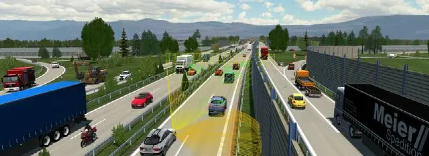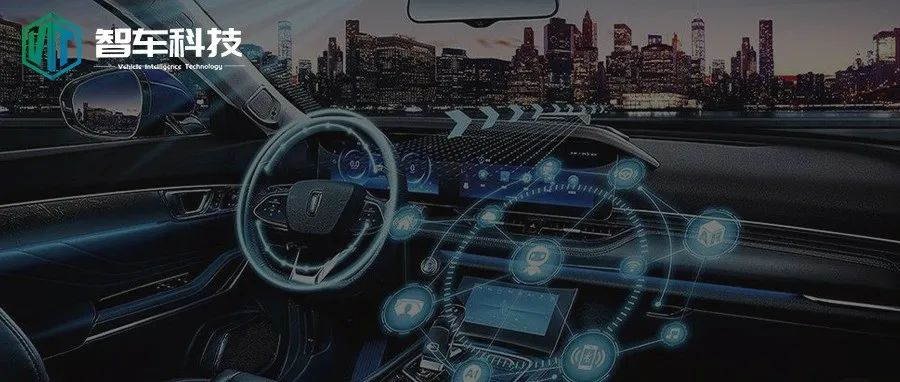Introduction
Before autonomous vehicles can be commercially deployed, they need to undergo a large amount of road testing to meet commercial requirements. Using road tests to optimize autonomous driving algorithms is too time-consuming and costly, and open road testing is still subject to regulatory restrictions, difficult to reproduce extreme traffic conditions and scenarios, and unsafe for testing. Currently, autonomous driving simulation testing has been widely accepted by the industry, with about 90% of autonomous driving algorithm testing completed on simulation platforms, 9% completed in test fields, and 1% completed through actual road tests.
In order for the simulation platform of autonomous driving to actually play a corresponding role in road testing, it must have several core capabilities: realistic reproduction of test scenarios, efficient use of road data to generate simulation scenarios, cloud-based large-scale parallel acceleration, etc., so that simulation testing meets the closed-loop algorithm of autonomous driving perception, decision-making planning and control. Currently, various entities, including technology companies, automakers, autonomous driving solution providers, simulation software companies, universities and research institutions, are actively involved in the construction of virtual simulation platforms, believing that they will play an important role in the commercial deployment of autonomous driving in the near future.
This article will lead readers to sort out 7 well-known autonomous driving simulation software platforms at home and abroad.
PreScan
PreScan is a car driving simulation software product owned by Siemens, based on physical models, for the development of ADAS and intelligent car systems. It supports the development and application of various functions such as cameras, radars, lidars, GPS, and V2V / V2I vehicle-to-vehicle communication. PreScan is based on the MATLAB simulation platform and is mainly used for simulation and emulation software of advanced driver assistance systems (ADAS) and unmanned autonomous driving systems, including various intelligent driving applications based on radar, cameras, lidars, GPS, V2V, and V2I vehicle / road communication technology. It supports various usage modes such as model-in-the-loop (MIL), software-in-the-loop (SiL), and hardware-in-the-loop (HiL).

PreScan consists of multiple modules, which mainly involve four steps: building the scene, adding sensors, adding control systems, and running simulation.- Scene building: PreScan offers a powerful graphical editor for users to build rich simulation scenes using road sections, including traffic signs, trees and buildings from a basic component library, as well as participants such as motor vehicles, bicycles and pedestrians, and modify weather conditions (such as rain, snow and fog) and light sources (such as sunlight, headlights and street lamps). The new version of PreScan also supports importing high-precision maps in OpenDrive format to create more realistic scenes.
-
Adding sensors: PreScan supports a wide variety of sensors, including ideal sensors, V2X sensors, lidars, mmWave radars, ultrasonic radars, mono and stereo cameras, fisheye cameras, etc. Users can add them as needed.
-
Adding control systems: Control models can be built using MATLAB/Simulink, or can be integrated with third-party vehicle dynamics simulation models such as CarSim, VI-Grade, and dSpace ASM to achieve closed loop control.
-
Running experiments: The 3D visualization viewer allows users to analyze the results of experiments and provides image and animation generation functions. In addition, interfaces using ControlDesk and LabView can be used to automate the running of experiment batches in a hardware-in-the-loop simulation.
CarMaker
Carmaker, along with related software TruckMaker and MotorcycleMaker, is a dynamic, ADAS and autonomous driving simulation software developed by the German company, IPG. Carmaker is first and foremost an excellent dynamic simulation software that provides accurate vehicle body models, such as engines, chassis, suspensions, drivetrains, and steering. In addition, Carmaker has created a closed-loop simulation system that includes vehicles, drivers, roads, and traffic environments.

-
IPG Traffic: A traffic environment simulation tool that offers a range of traffic objects such as vehicles, pedestrians, road signs, traffic lights, road construction, etc. It can simulate real traffic environments. Test vehicles can recognize traffic objects and trigger corresponding actions (such as speed limit signs triggering vehicles to decelerate).
-
IPG Driver: An advanced, self-learning driver model that can control the vehicle under various driving conditions, such as uphill starts, parking, and drifting. It can adapt to the vehicle’s power characteristics (drive type, transmission type, etc.), road friction coefficient, wind speed, and traffic environment conditions to adjust driving strategies.As a platform software, CarMaker can integrate with many third-party software such as ADAMS, AVLCruise, and rFpro to take advantage of their strengths for co-simulation. At the same time, CarMaker’s hardware provides a large number of board interfaces, which can be conveniently connected to ECU or sensors for HIL testing.
CarSim
CarSim, as well as the related software TruckSim and BikeSim, are powerful dynamic simulation software developed by Mechanical Simulation company, which is widely used by OEMs and suppliers around the world. CarSim is designed for four-wheeled cars, light trucks, TruckSim is designed for multi-axle and dual-tire trucks, while BikeSim is designed for two-wheeled motorcycles. CarSim is a whole-vehicle dynamic simulation software, mainly simulating from the perspective of the vehicle itself. It has a considerable number of vehicle mathematical models built-in, and these models have rich experience parameters that users can quickly use, saving the tedious modeling and tuning process.

CarSim models can run on computers at a speed 10 times faster than real-time. It can simulate the response of vehicle control by drivers, 3D road and aerodynamic inputs, and its simulation results are highly close to real vehicles. It is mainly used to predict and simulate the handling stability, braking performance, ride comfort, power performance, and fuel economy of the entire vehicle. CarSim has a standard Matlab/Simulink interface, which can easily co-simulate with Matlab/Simulink for control algorithm development. At the same time, it can generate a large amount of data results for subsequent analysis or visualization using Matlab or Excel during simulation. CarSim also provides an RT version, which supports mainstream HIL testing systems such as dSpace and NI systems, facilitating co-simulation for HIL testing.
VIRES VTD# VTD (VirtualTest Drive)
VTD is a complete modular simulation toolchain for ADAS, active safety, and autonomous driving developed by VIRES, a German company. VIRES has been acquired by MSC Software Corporation in 2017. VTD currently runs on the Linux platform and covers functions like road environment modeling, traffic scenario modeling, weather and environmental simulation, simple and physically realistic sensor simulation, scene simulation management, and high-precision real-time rendering. It can support full-cycle development processes from SIL to HIL and VIL, and the open modular framework can easily be coupled with third-party tools and plugins for combined simulation. VIRES is also a major contributor to widely used open formats for autonomous driving simulation, such as OpenDrive, OpenCRG, and OpenScenario, the functionality and storage of which are also supported by VTD. VTD’s simulation process mainly consists of three steps: road network construction, dynamic scene configuration, and simulation running.

-
VTD provides a graphical interactive road network editor (ROD) called RoadNetwork Editor. While using various traffic elements to construct a complex road simulation environment with multiple types of lanes, OpenDrive high-precision maps can be generated simultaneously.
-
In establishing dynamic scenes, VTD provides a graphical interactive scene editor called ScenarioEditor, which provides traffic bodies with user-defined behavior control on the basis of OpenDrive, or a continuous traffic flow running in a certain area.
-
Whether it’s SIL or HIL, real-time or non-real-time simulation, single or high-performance computing environments, VTD provides corresponding solutions. During VTD runtime, real-time high-quality lighting effects, road reflection, vehicle rendering, rain, snow, fog weather rendering, sensor imaging rendering, headlight visual effects and other high-quality simulation effects can be simulated.
PTV Vissim
Vissim is a world-leading micro-traffic flow simulation software provided by PTV, a German company. Vissim can easily construct all kinds of complex traffic environments, including highways, large roundabouts, parking lots, etc. It can also simulate the interaction behaviors of motor vehicles, trucks, rail transit, and pedestrians in a simulation scenario. It is an effective tool for planning and evaluating urban and suburban traffic facilities and can also be used to simulate the impact of local emergency situations on traffic and the evacuation of large numbers of pedestrians.
Vissim’s simulation can achieve high precision, including microscopic individual following and lane-changing behavior, as well as cooperative and conflicting behavior among groups. Vissim incorporates a variety of analytical methods, which can not only obtain various specific data results under different scenarios but also obtain intuitive understanding from high-quality 3D visualization engine. Self-driving algorithms can also use simulated high-dynamic traffic environments for simulation testing by connecting to Vissim.
TESS NG
TESS simulation system is the first-generation road traffic simulation system developed by Professor Sun Jian of Tongji University in 2006. Since then, after ten years, Professor Sun Jian’s research group has carried out more than 100 model innovations and simulation system application practices for the operation characteristics of mixed traffic flow in China. The main functions of TESS NG micro-traffic simulation system are: full traffic scene simulation, multi-mode traffic simulation, intelligent traffic system simulation, visual evaluation, secondary development interface, support for 3D scene display, etc. At the same time, TESS NG can be integrated with the city traffic brain, traffic control system, computable road network (such as OpenDrive, OpenStreetMap, etc.). It can also be integrated with driving simulators, BIM/CIM systems, intelligent vehicle virtual test tools, etc. to achieve cross-industry applications. Users can also achieve more cross-industry applications through customized services.

CARLA
CARLA is an open-source simulator developed under the guidance of the Computer Vision Center of the Autonomous University of Barcelona in Spain, used for developing, training, and validating autonomous driving systems. Like AirSim, Carla is also developed based on the Unreal Engine, using a server and multi-client architecture. In terms of scenes, CARLA provides open-source digital resources for creating scenes for autonomous driving (including city layouts, buildings, and vehicles) and several scenarios for testing and training autonomous driving built from these resources. At the same time, CARLA can also use VectorZero’s road building software RoadRunner to create scenes and accompanying high-precision maps, and it also provides a simple map editor.
 CARLA also supports flexible configuration of sensors and environment. It supports multiple sensors such as cameras, LiDAR, GPS, and can also adjust the lighting and weather of the environment. CARLA provides simple vehicle and pedestrian behavior simulation, and also provides a set of Python interfaces to control the vehicles, traffic lights, etc. in the scene, which can be used for convenient joint simulation with autonomous driving systems, and to complete decision-making system and end-to-end reinforcement learning training.
CARLA also supports flexible configuration of sensors and environment. It supports multiple sensors such as cameras, LiDAR, GPS, and can also adjust the lighting and weather of the environment. CARLA provides simple vehicle and pedestrian behavior simulation, and also provides a set of Python interfaces to control the vehicles, traffic lights, etc. in the scene, which can be used for convenient joint simulation with autonomous driving systems, and to complete decision-making system and end-to-end reinforcement learning training.
The above is a list of well-known autonomous driving simulation platforms at home and abroad. We also welcome everyone to supplement other autonomous driving simulation platforms that have been used in the comment section below.
This article is a translation by ChatGPT of a Chinese report from 42HOW. If you have any questions about it, please email bd@42how.com.
